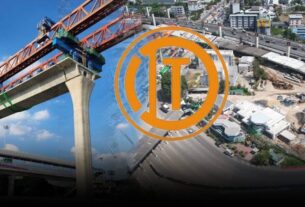Lower costs plus export opportunities

 Knocked-down houses made from expanded polystyrene (EPS) foam have been a small and struggling niche market for three decades but builders today are seeing brighter opportunities to expand their reach to overseas customers.
Knocked-down houses made from expanded polystyrene (EPS) foam have been a small and struggling niche market for three decades but builders today are seeing brighter opportunities to expand their reach to overseas customers.
The Cement Foam Design Association, a group of small and medium-sized companies, says 20 of its members have received orders from neighbouring countries such as Laos and Vietnam to build houses using EPS foam.
Laos, in particular, has shown high demand for the so-called Baan Foam for local residents who are being forced to move to make way for the building of hydroelectric dams, according to Sumrerng Ritphring, the chairman of the association.
Made with EPS foam panels and covered with cement, Baan Foam houses are attractive and the indoor decoration can also be as attractive as customers require.
Importantly, the houses are cheaper and take only one month to assemble, compared with three or four months to build a house in the conventional way.
As well, occupants can reduce energy used by air conditions by 30% because EPS foam provides better insulation, said Mr Sumrerng.
His company, Triple A Property Co, recently received orders for 1,000 houses to be shipped to Japan to accommodate people who lost their homes in the March 11 earthquake and tsunami.
“We are in the process of negotiating the prices of these houses, which normally cost 200,000 to 300,000 baht per unit for a single-floor house,” said Mr Sumrerng, the general manager and founder.
The company has also been in talks with customers in Kenya for a large number of EPS foam houses, he added.
EPS foam construction is widely used and accepted in neighbouring countries including Cambodia and China, as well as Japan and European markets.
He said EPS foam structures are strong enough to withstand earthquakes and thus the products are suited to risk areas including Japan. However, the technology is not accepted in Thailand.
“Thai authorities do not allow houses made from EPS foam to be built and this means banks are reluctant to extend loans to finance construction,” he said.
Mr Sumrerng, an industry veteran who worked with Seacon Home Co for almost 20 years, said foam offers an innovative technology that also makes it possible for low-income earners to own their own single-floor house with three bedrooms for as little as 400,000 baht.
His company is now targeting resorts and homestay projects outside Bangkok. It has orders from a homestay operator in Samut Songkhram’s Amphawa district that is famous for its floating market.
Earlier, several units of the foam houses were built at a resort in Khao Yai, he added.
Source: http://www.bangkokpost.com/business/economics/235753/more-builders-turning-to-foam

